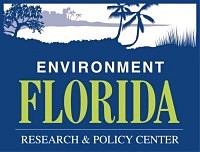Tortugas Ecological Reserve highlighted as an
example of long-term benefits of marine protected areas
Florida’s own Dry Tortugas National Park is an example of ocean protection done right, according to a new report released Thursday by Environment Florida Research & Policy Center and Frontier Group. Entitled New Life for the Ocean: How Marine Protections Keep Our Waters Wild, the report highlights how ocean habitats that are protected from destructive human activities, like the Tortugas Ecological Reserve, can help restore and protect ocean wildlife.
“From sea turtles to manatees, the iconic marine life that swims off our shores is an important part of our identity. Keeping our ocean ecosystems healthy is incredibly important,” said Jackson Oberlink, Protect Our Oceans Organizer with Environment Florida Research & Policy Center. “That’s why the findings of this report are so significant–it highlights that not only do we have the tools to protect and restore our oceans, we already have a successful example of this type of protection in our own backyard.”
Coming on the heels of President Biden’s executive order last Wednesday that set the national goal of protecting 30 percent of U.S. lands and oceans by 2030, the report looks at Dry Tortugas National Park alongside five other highly- to fully-protected marine areas. The report found that since the establishment of the Tortugas Ecological Reserve in 2001, this area has seen an increase in certain species of fish gathering to spawn. Because the reserve is located at an “ecological crossroads” in the Gulf of Mexico, this has helped replenish reef fish populations across the continental U.S.’s only barrier coral reef and throughout South Florida.
In reviewing the series of recent case studies from all six marine protected areas (MPAs), the report finds that highly- to fully-protected marine areas–safe from all or most destructive human activities — nurture and increase biodiversity, boosting overall ecosystem health. Well-designed and long-lasting protections also increase the abundance and biomass of marine life, while helping mitigate the impacts of climate change.
The findings of the report also add to the mounting evidence that we need to take bolder action to protect ocean habitats. Alongside implementing sustainable fisheries management practices and making efforts to lower greenhouse gas emissions, governments at all levels should commit to protecting 30 percent of ocean habitats by 2030.
“We’ve taken too much from the oceans, and put too much pollution back in. It’s time to give our oceans a chance to recover,” said Kelsey Lamp, Protect Our Oceans campaign director with Environment America Research & Policy Center and co-author of the report. “Restoring our broken ocean ecosystems starts with protection.”
Along with the report, the group created an “underwater hike” for those looking to virtually experience the marine protected areas highlighted in the report.
“For more than a century, our country has embraced the concept of wildlife refuges — spaces set aside to ensure healthy and vibrant wildlife populations,” said Oberlink. “This report makes it clear that setting aside critical ocean habitats is also a key component of this conservation legacy — that being good stewards of our seas starts with protecting our most vulnerable and amazing life under the waves.”
Environment Florida Research & Policy Center is a 501(c)(3) organization dedicated to protecting Florida’s air, water, and open spaces. We investigate problems, craft solutions, educate the public and decision-makers, and help people make their voices heard in local, state, and national debates over the quality of our environment and our lives.

